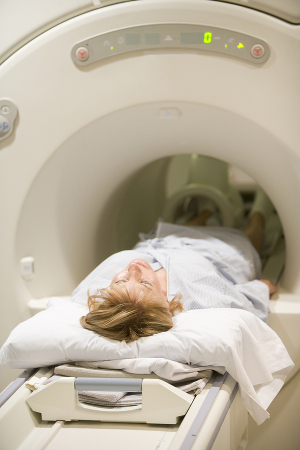by
John R. Fischer, Senior Reporter | April 06, 2023

Only 1.8% of eligible, insured Americans undergo low-dose CT scans for lung cancer screenings.
Despite being covered and owing nothing out-of-pocket, less than 2% of eligible Americans with private insurance undergo low-dose CT scans for lung cancer screenings, indicating a need to develop effective strategies for reducing screening deterrents.
According to a Harvey L. Neiman Health Policy Institute study, only 1.8% of these patients have received LDCT scans. Even among the highest groups, Original Medicare and Medicare Advantage beneficiaries, screening was just 3.4% and 4.6%, respectively, with potential factors including lack of awareness, access and social determinants, say the researchers.
The findings were based on 2017 claims data for 6.9 million individuals and guidelines issued by the U.S. Preventive Services Task Force, which deemed patients between 55 and 77 with a 30-year pack smoking history (one pack a day for 30 years) eligible. It
lowered the age in 2021 to 50 and redefined a heavy smoker as having a 20 pack-year history, (that update was not evaluated in the study).



Ad Statistics
Times Displayed: 174704
Times Visited: 3185 For those who need to move fast and expand clinical capabilities -- and would love new equipment -- the uCT 550 Advance offers a new fully configured 80-slice CT in up to 2 weeks with routine maintenance and parts and Software Upgrades for Life™ included.
“Cost has been eliminated as a barrier, so it is important to understand more about who is and isn’t getting the recommended LDCT,” said author Bob Smith, senior vice president of early cancer detection science at the American Cancer Society.
Screening was lowest among women (1.55%-4.02%); 75-77 year olds (0.63%-2.87%); and those in rural areas (1.88%-3.56%) and out West (1.16%-3.65%). Only Original Medicare data showed racial disparities, with screening rates among Blacks at 2.17% and other races at 1.68%, compared to 3.71% among Whites.
Smith and his colleagues measured screening rates from Optum’s 2017 deidentified Clinformatics Data Mart, which contains large commercial and Medicare Advantage health plans; and the 2017 Centers for Medicare & Medicaid Services’ 5% Research Identifiable Files, containing Original Medicare claims.
They also estimated county level adjusted smoking rates to determine eligibility, estimating that 1.1 million (15.7%) individuals qualified for LDCT screenings.
Two takeaways from the study:
- Regardless of payer, enrollees in the Northeast region undergo LDCT at much higher rates compared to the rest of the country, which may be attributed to the high concentration of American College of Radiology accredited lung cancer screening facilities there.
- Rural areas have lower LDCT rates than urban areas despite having larger eligible populations due to higher smoking rates. Enrollees residing in rural areas face greater barriers to access than urban enrollees because of factors such as lack of referral from a health care provider, inadequate transportation, greater average distances to the closest LCS facility, and lower rates of insurance.
“Together, these data can inform practitioners and policy makers on how to best target efforts to increase lung cancer screening in vulnerable populations,” said lead study author Danny Hughes, professor at Arizona State University.
Since patient education and physician engagement have been shown to influence the use of screening, the researchers expect lung cancer screening utilization will climb among eligible individuals and health insurance as patient and provider awareness and engagement increase.
The findings were published in the
Journal of the American College of Radiology.

